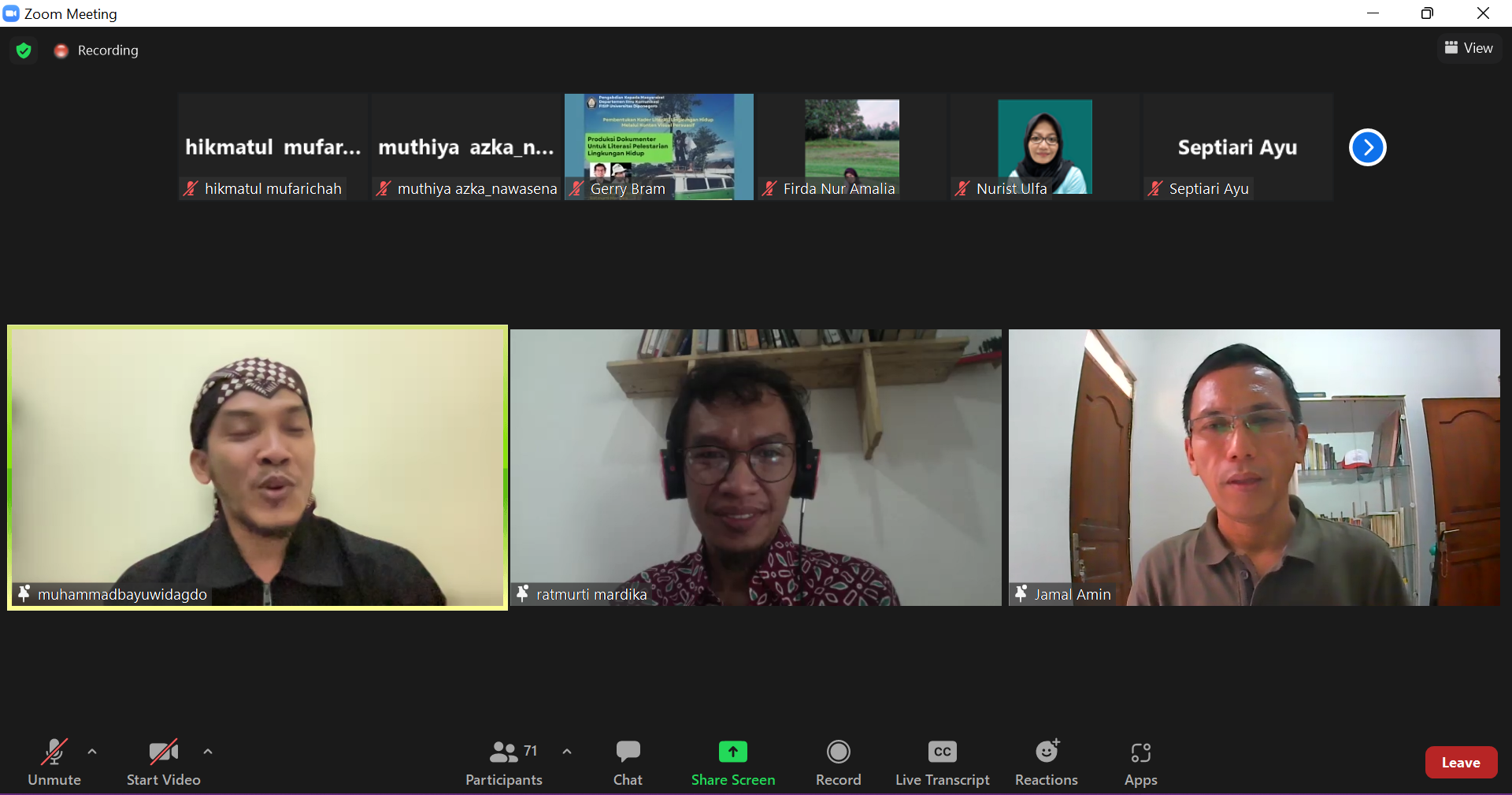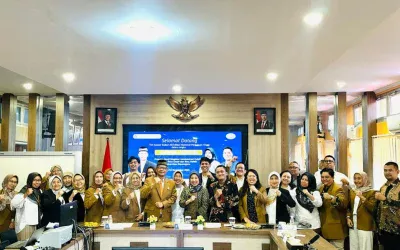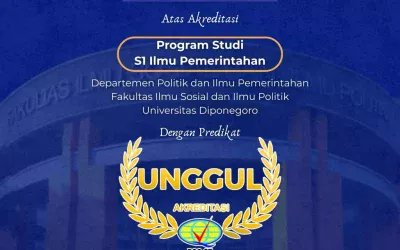Source: Hikmatul Mufarichah
Semarang –Workshop entitled community service organized by the Department of Communication, Faculty of Social and Political Sciences, Diponegoro University, was carried out on May 14, 2022, through the online media zoom. The workshop was opened by Muhammad Bayu Widagdo, MIKom as moderator by conveying the general concept of the workshop. In particular, this program is aimed at sustainably preserving the environment. The first speaker was Jamal Muhammad Amin, SS., chairman of the Archipelago Documentary Association (ADN), and the second speaker was Ratmuri Mardika, one of the lecturers familiarly called Mas Sonski. This webinar was attended by 100 participants, the majority of whom came from Diponegoro University Communication Studies students and several communities from PSDK Rembang.
“We are aware of the effects of climate change, whether we realize it or not. This is supposed to be the dry season month, but it still often rains. The temperature has changed drastically, like in Ciputat,” said Yanuar Luqman when opening his speech representing the Department of Communication Science. Yanuar also added that the presence of this workshop was initiated by the concerns shared by the two other Communication Science lecturers, namely Muhammad Bayu Widagdo and Nurist Tsurayya Ulfa, regarding the current environmental conditions. As a “communicator”, presenting a workshop like this is a form of effort to overcome environmental problems by building awareness.
At the beginning of the presentation of the material, Jamal gave several documentaries with the theme of reducing environmental damage, one of which was a film entitled “Energy from Cow Waste”. This film tells the experience of a group of cattle farmers who use cow dung for biogas in Klaten and Boyolali. Documentary films can be made because they depart from ideas that arise both from oneself and others. Ideas can be formed through unrest and curiosity that inspires to create something. Documentary film packaging that starts from an idea and is supported by data and facts must still prioritize the delivery of the core of the problem.
The data and facts obtained must go through documentary research first, namely by collecting as much information as possible about the topic of the problem raised using the method of observation and in-depth interviews. In conducting research, it is important to focus on subject data (physical, sociological, and psychological data), important events experienced by the subject, and location (geographical data). The purpose of the research itself is to collect data, find the character of the subject, prepare budget requirements, and develop production management needs. The research stage itself is divided into 3 parts, namely library research (excavating information through books and research), location research (collecting data by coming directly to the location), and participatory research (approaching sources).
Not only that, documentary interviews have an important role because they are the core or spirit of the documentary itself. By building closeness with the resource persons, it is hoped that they can tell a comprehensive story so that we can find out their point of view and attitude regarding the topic of the issue raised. In this case, we must honestly explain the intent and purpose to the interviewee, ensuring that there is no compulsion to feel flowing during the interview.
Furthermore, there are documentary film production preparations that must be considered. Some of these things include preparing equipment and administrative files (asking for permission from the village head, hamlet, RT, RW), preparing shooting scripts and interview schedules, and making cost estimates. Licensing is very much needed because it involves the approval of related parties (resources and the surrounding community). After all, the documentary will be published to the general public. The shooting script is useful for the cameraman when taking pictures to make it more organized and neat, while the interview schedule is useful for being able to adjust the time to adjust the interviewee. Cost estimates were made to avoid overbudgeting, especially those related to accommodation and transportation.
In the presentation of the material for the next session, Mas Sonski gave an overview of how we can determine the perspective on the environment. He revealed that rounding the environmental perspective is important. Because the perspective is related to a point of view that cannot be seen from only one angle. An important perspective to be discussed and has become a concern, is that Mas Sonski himself has chosen a project that is judged according to his priorities and concerns.
Armed with the consensus that has been chosen, Mas Sonski is interested in studying more deeply environmental problems. According to him, the environment is our life. If the environment is damaged, then our lives will also be damaged. We are part of the environment, therefore it should not damage the environment. Environmental problems must be solved communally or by the community. The medium of film is considered effective for building educative discourse in inviting and persuading audiences to participate in making changes for the better.
“Change has to start with oneself, farmers with their fields, filmmakers with their cameras, and students with their knowledge. It is only a matter of starting, then the execution must be collectively communal. The environmental perspective that was adopted into a documentary is to politicize change,” said Mas Sonski.
Meanwhile, films have the power to influence the public dramatically. This is because the film is an entity of audio, visual, and story (dramaturg). With this entity, it will be easier to persuade or provoke the audience than in books or newspapers.
Initially, the film’s audience only consisted of a special class of people (priyayi). However, along with the times, films have become almost egalitarian or target all groups, both the causes and the affected groups (in terms of environmental conservation). The more people who watch the film, the more perspectives on caring for the environment are formed and embedded.
Furthermore, Mas Sonski also provides tips for making a documentary film which includes three parts, namely pre-production, production, and distribution. The pre-production stage makes the authority of filmmakers more secure because they are given full scope to develop their ideas. At the production stage, the power of the documentary must be conveyed according to reality to ensure the trust of the audience. Not only that, but the aesthetic aspect of the film must also be considered, but it is also negotiable (not excessive). The finished film is then distributed through film festivals, film communities, green or environmental festivals, film screenings, and discussions, and can take advantage of access to talk about environmental issues.
“Making a film is easy, but maintaining its lifespan is very difficult. Don’t let it be after the film is finished, it will just be left dusty on the hard drive,” Mas Sonski said at the end.
Author: Risa Nurhaliza
Reporter: Hikmatul Mufaricah
Edotir: Lasting Irma Salugiasih
Source : komunikasi.fisip.undip.ac.id





0 Comments